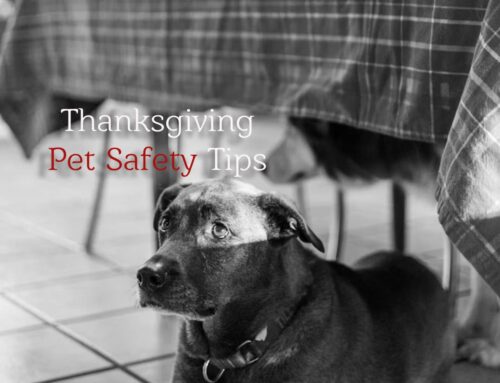Most people are prepared for emergencies related to their family and home. You probably have a first aid kit, flashlights, and a fire extinguisher at the very least just in case something happens. But even some of the most responsible pet owners haven’t thought much about how to prepare for pet emergencies.
If you just now realized you’re one of them, don’t worry. We’ll lay out the basics so you can be ready from now on.
1. Keep medical info handy
Take a few minutes to write or type out a master info sheet for your pet’s medical needs, and keep it on the fridge or in another visible and accessible location. It should include:
- Contact info and hours for your regular vet
- Contact info and hours for your emergency vet
- Your pet’s medical conditions
- Names and dosages of any medications they take
- The phone number for pet poison control (the ASPCA animal poison control number is 888-426-4435)
- Any other info related to your pet’s health or care
2. Have a plan in place
If you suddenly have to rush your pet to the emergency vet, it’s helpful to have a plan. If you have children or other pets, is there a neighbor, friend or family member who can quickly step in to care for them? If your usual emergency vet isn’t available, do you have a backup? If you don’t have a car, is there someone you can call to give you a ride? Bottom line, think through what that moment will look like and make sure you know what you’ll do.
3. Have a pet first aid kit
The hope is that you’ll never have to use it. But in case something happens, you’ll be very glad that you have some basic first aid supplies on hand. You can purchase ready-made kits or gather supplies to make your own. Depending on your pet, your kit should include:
- Gauze
- Self-adhering bandages
- Cotton balls or pads
- Hydrogen peroxide
- Antibiotic spray or ointment
- Milk of magnesia and/or activated charcoal (to absorb poison)
- Digital thermometer
- Scissors
- Tweezers
- Magnifying glass
- Flashlight
- Eyedropper or large, needle-free syringe (for flushing wounds)
- Towel
- Soft muzzle
- Disposable gloves
- Styptic powder
4. Learn Pet CPR
The sad fact is that performing CPR incorrectly on a pet can end up causing more harm than good. So if you’re not sure, you should not attempt it and instead, get your animal to a vet as soon as possible. However, if you’d like to be ready to perform it, please make sure you learn how to administer it correctly from a qualified veterinarian.
5. Be ready to ask for help
The best thing you can do in a pet emergency is to get help from a veterinarian. If you’re ever concerned, just pick up the phone and call your vet or emergency vet (depending on what time it is) and describe what’s going on. They’ll be able to give you the next steps, whether that be keeping an eye on your pet or coming in for treatment. And if you’re not sure, check out our guide for how to know if you should visit an emergency vet.







